Search
Search Results
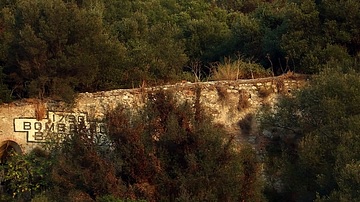
Image
Tower of Homage, the Moorish Castle, Gibraltar
The Moorish Castle's Tower of Homage, built in the 8th Century CE. The "Moorish Castle" was built by the Berber Marinid Dynasty, and is a symbol of Muslim rule in Medieval Spain. The Tower of Homage is the tallest to be constructed during...
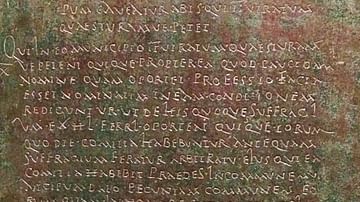
Image
Lex Malacitana from Roman Málaga
This tablet is made of bronze and was made c. 81-96 CE in Málaga, Spain. The "Lex Malacitana" was a fundemental pillar of the new Hispano-Roman culture. In order to maintain order in the empire, Rome pased laws governing both public and private...
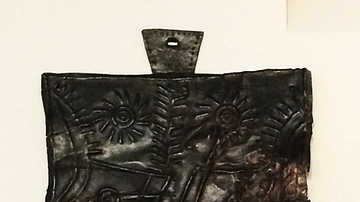
Image
Celtiberian Pectoral Ornament
This Celtiberian pectoral ornament, which portrays a wild landscape replete with horses and stars, would have closed to form a carrying case. This specimen is made of bronze and dates to the 3rd-2nd century BCE. It was found in Arcobriga...
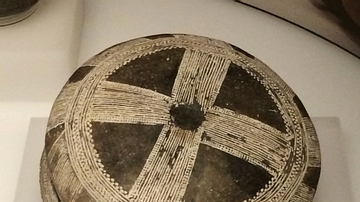
Image
Early Bronze Age Bell Beakers from Iberia
These clay bell beakers come from the Early Bronze Age necropolis of Ciempozuelos (Cuesta de la Reina, Madrid), Spain and they were found during excavations conducted in the late 19th century CE. (Ciempozuelos was the first Bell-Beaker necropolis...

Image
Hispano-Roman Tragedy Mask
This Hispano-Roman tragedy mask was originally an architectural element made of clay. It dates from the 1st-2nd century CE, and it was found at Bañuelas (Ávila), Spain. (Museo Arqueológico Nacional, Madrid)
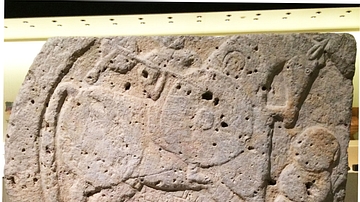
Image
Celtiberian Stela from Clunia
This incomplete funerary stela with an inscription in the Celtiberian language and Western Celtiberian script comes from Coruña de Conde (Peñalba de Castro), Burgos in Spain. The inscription transcribes as "Kaabaarinos," in nominative masculine...
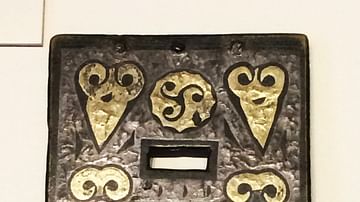
Image
Carpetani Belt Buckle
This belt buckle depicts wild boars and is made from bronze, silver, and gilded silver. It was made by members of the Carpetani culture around the 3rd-2nd century BCE, and it was discovered in the province of Toledo, Spain. (Museo Arqueológico...
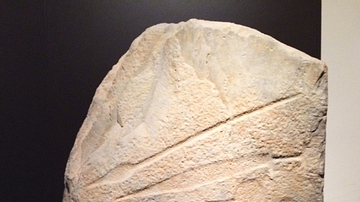
Image
Warrior Stela from Bronze Age Iberia
This stela is from Solana de Cabañas (Cabañas del Castillo, Cáceres), Spain and dates from the Late Bronze Age. It is made of slate, and it was unearthed in the late 19th century CE. This was the first specimen to be discovered in a series...
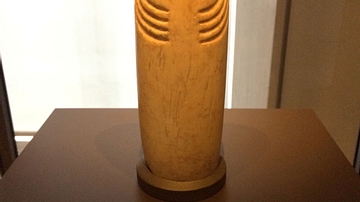
Image
Idol of Extremadura
The representation of eyes is a common trait shared by different groups of idols and has given rise to a generic term for these objects: "eye idols." Other shared feeatures are the representation of hair and what are thought to be facial...
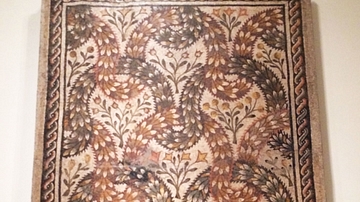
Image
Hispano-Roman Plant Mosaic
This Hispano-Roman mosaic adorned the antechamber to a reception room at the Villa de Soto de Ramalete, which was a country villa in Tudela (Navarre), Spain. It is made of limestone and dates from the 4th century CE. The plant motifs, intertwined...